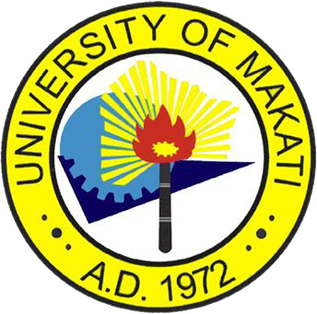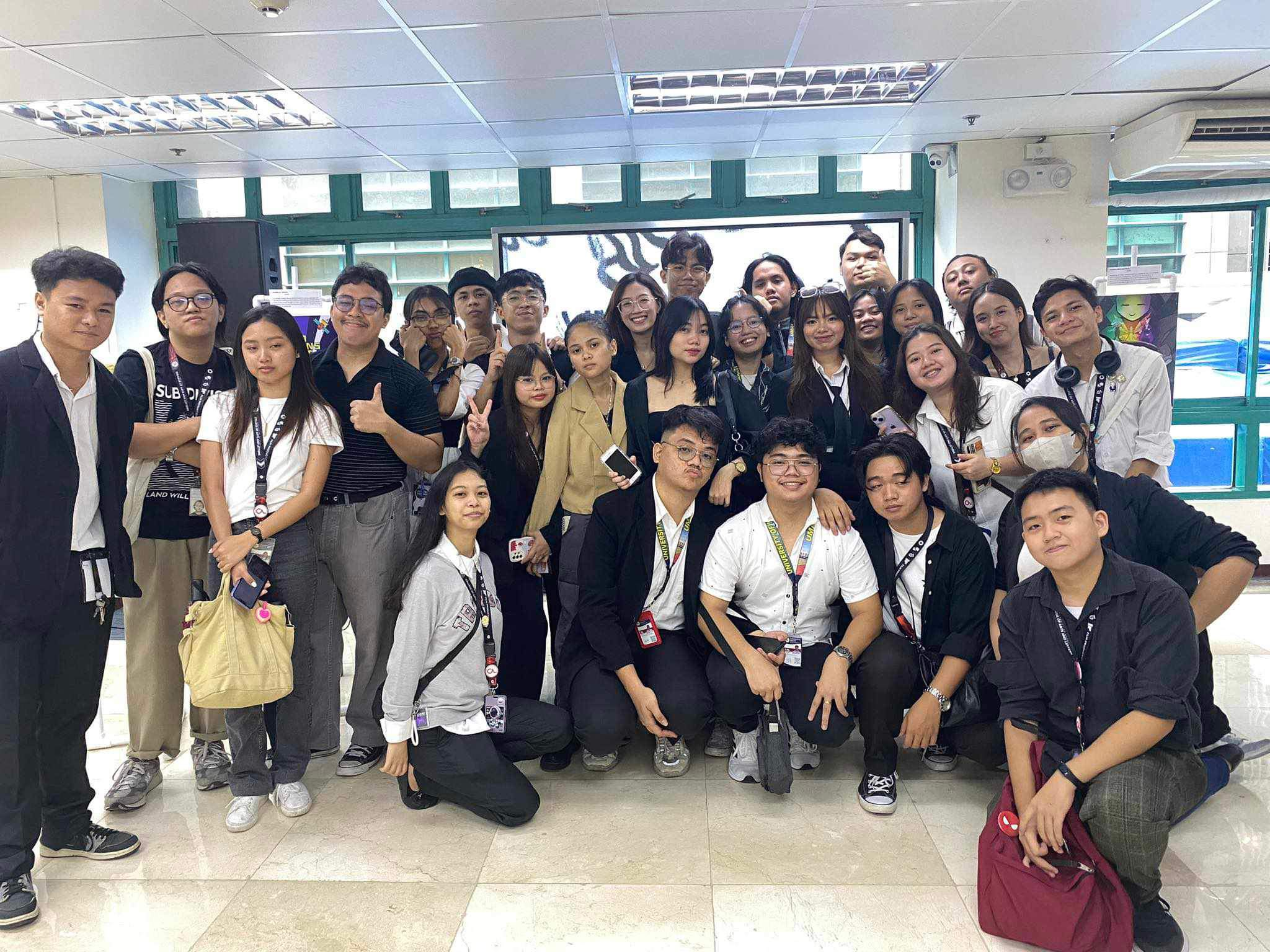MAKATI’S CULTURE REIMAGINED:
AUGMENTED REALITY THROUGH A SCREEN
“They have to know about Makati’s cultural heritage. And of course, as an artistic and cultural office, the best way to share that is through art.” -Mr. Dwayne Samarista, MCAO
During National Arts Month in February, participating organizations and museums nationwide assemble talents and masterpieces to celebrate art that evokes creativity and way of life. In Makati, an artistic collaboration between the Museum and Cultural Affairs Office (MCAO) and the University of Makati through the former College of Arts and Letters (CAL) strived to elevate the culture to the technological scene.
The Pamanang Makatizen: Digital Art Collection, an event that opened on May 27, 2024 at Museo ng Makati, aimed to demonstrate Makati’s recognized cultural assets through digital artworks integrated from the cultural mapping output led by Dean Mary Acel German with CAL, crafted by the Bachelor of Multimedia Arts students..
Held at the heart of Barangay Poblacion, in a place abundant in history, a promising innovation emerged, offering Makatizens a taste of the past through a creative display that highlighted long-standing establishments whose historical significance had been overlooked.
LINKING TECHNOLOGY TO CULTURE AND ARTS
Makati, as a smart city, traces its roots to the vision of Mayor Abby Binay, who always emphasized technology integration in her administration. With her directive to all departments to generate their digital transformation program, MCAO officer-in-charge, Mr. Dwayne Samarista, and the cultural and arts office had tried exploring ways of incorporating technology into their functions.
Not until the “Paint to Pixel” exhibit of the Draper Startup House Manila, partnered with the Government of Makati, from February 7 to April 30, 2023, occurred. The creatives behind the gathering formally presented Mr. Samarista with Web 3.0 concepts: artificial intelligence (AI), non-fungible token (NFT), virtual reality (VR), and augmented reality (AR).
Harnessing such knowledge sparked an idea: why not use augmented reality to present local inventory from cultural mapping activities? He believed such information must be shared with people, not on paper or a computer, but through art. Looking no further, “We knew IAD had a very successful Multimedia Arts program. Why not partner again with the UMak for the students to create digital art based on the cultural inventory?” he noted.
MAKING IT HAPPEN
Prof. Stanley Rovira, Program Director of Multimedia Arts, recalled that MCAO went to his office and presented the plan to develop local heritage into artworks, which caught his interest. In preparation, the faculty underwent training on Artivive with Industrial Lecturer Mr. Carmichael Hirang, before incorporating the task for third-year BMMA students and their Interactive Media and Design course requirement.
Two selected students reminisced about how the news was received after several months. Kaila Arvi Ariston, Film Society’s former president, learned about the project directly from the organization adviser, Prof. Rovira, before their subject instructor oriented the class. Meanwhile, animation major Christian John Rentosa got interested after learning the government was their client. With questions answered after a meeting with the Dean: “Yung institute natin, we went above and beyond. Hindi lang mi-nap yung cultural heritage sites, gumawa rin tayo ng artworks for that project." The groups then proceeded to interview the mappers and headed to the sites.
The first 50 cultural assets MCAO assigned were developed into static artworks, alternatively known as trigger images, with their AR overlay. The interactive digital animation overlays real-life surroundings generated using a mobile device. With the documented locations in place and the caliber of multimedia arts students, artworks came to life.
Innovation is motivation
From a program for individuals with technical animation and mastery of storytelling, Rentosa remarked on the similarities in skills and prioritization of story and storytelling, which manifested throughout the project. Conversely, Ariston, who struggled with showcasing filming prowess in an animation-oriented scene, reverted to storytelling, where she excels.
Across their respective disciplines, various art techniques such as Bauhaus, pop art, impressionism, and surrealism were implemented, creating a visually appealing output, as Christian described as 'magical.’ These styles gave the freedom to incorporate elements that make art interesting.
Rentosa’s solo work portrayed Maricaban Creek, with predominant blue hues and a water pump, with water outwardly flowing as the main feature of the cultural waterway. Designed to draw the viewer into the artwork’s focal point, while its surroundings progress from grasslands to tall residential buildings.
The renowned butterfly-shaped appearance on the overhead view and the x-shaped cross of the Saint Andrew the Apostle Parish Church played a big part in the narrative Ariston and partner Stephanie Ancheta employed for their impressionism piece. Admiring the interesting background of the namesake, they highlighted the insect in yellow, roaming the inside and outside the church.
From the building of Commonwealth Foods, Inc., or Comfoods, they shifted the focus to its produce— curly tops, cookies, and coffee beans in particular, enhancing the immersive overlay. As she elaborated, “Kung building yung ibibida ko, parang medyo cliche at walang storya. I wanted to incorporate ano ba talaga yung binebenta nila, bakit sila naging heritage ng Makati.
THE JOURNEY AND ADVERSITIES
Artivive was found to have a simple, straightforward, user-friendly interface, gaining compliments from its users. Rentosa commented on how interesting 2D elements can be arranged in a 3D space and how the overlays were shown when viewed, while Ariston observed that the application was easy to comprehend and grasp when used unsupervised.
Although successful, student-creators still encountered challenges during the first-ever AR exhibit. Its software technicalities were still relatively new for Rentosa. Another was considering how the animation will appear and how easily the viewers can understand the art at first scan. Ariston’s general knowledge of animation, while using After Effects, posed a challenge compared to the in-depth proficiency of her counterparts. She also raised that the groups had to repeat test overlays to ensure output quality and scanning ability.
Furthermore, the subscription-based application limits accounts to 50 viewers, preventing students from reaching the maximum views per art piece. An expensive account the institute bought was distributed among several groups, forcing them to reduce viewer counts to accommodate all, which was challenging since it is highly dependent on visitor numbers.
Nevertheless, it led to the makers’ profound rapport and development with other participants. Citing it as their first major project post-pandemic, it served as a groundwork for their interactions, problem-solving skills, and enhancement of collaborative skills.
Rentosa narrated how the group responded to emerging problems and the enrichment of cooperative efforts that made a good project. One for the books—Ariston expressed the unforgettable memory with the hardships they experienced and how endearing the final results were, considering the months it took them to formulate the artworks. “It was a great experience as an artist. Dagdag siya sa skillset namin.”
UNLOCKING DOMINOS
Before the technology-driven knowledge and innovation the AR project provided the university, Prof. Rovira surely treated the high-impact activity as a challenge, but saw the great addition to students’ skills development when they graduate and their portfolios when they apply for work. Excellence compared to other institutions is nurtured through projects like AR artworks associated with UMak and its Herons.
He shared his next plan for the future of AR artwork with the College of Computing and Information Sciences (CCIS) to develop a local AR application that will enrich the students and offer inexpensive alternatives that can be endlessly expanded using animation forms like 3D.
Moreover, Mr. Samarista mentioned that IAD is again tapped to create the audio-visual presentation of the city’s patroness, Virgen De La Rosa De Makati, which the Rosas ng Sampiro Festival is derived from. The office also looks forward to more assets, short films, and documentaries anticipated for the rest of the year, and years to come, including plans to turn the art collection into a travelling exhibit to other places.
While the Pamanang Makatizen showcase ended months ago, those interested can still immerse themselves by visiting the Museo, where artworks will always be displayed. The next wave of 50 digitized cultural assets is set to launch in May 2025 at the Museo as part of the permanent collection.
CULTURE LIVES ON
“As a Makatizen, nadadaanan ko lang siya before,” Ariston admitted when asked about the heritages assigned to them. Instances like these are specifically the driving force of Mr. Samarista and MCAO—to introduce the unknowing Makatizens, even guests, to the existence and significance of all cultural assets to the city’s identity and foster an immense love and pride for Makati that extends to becoming its advocate and contributor to its development, fiercely rooted in cultural literacy and attachment to its history.
With AR-infused artworks, people can be simultaneously informed and entertained, like Ariston mentioned, “creativity is a way to grab a viewer’s attention.” They also bridge the connection of historical landmarks, objects, and practices to younger generations, aided by an enticing medium that resonates with them.
“We have to pay homage sa mga cultural heritage natin, para mabigyan din sila ng justice na hindi lang sila dinadaanan na old buildings, old houses, even old trees. They are not like that. They have stories to tell and we can only tell them through arts,” said Ariston.
Technology offers a positive outlook for the arts and preservation of cultural heritage. Through enriching partnerships like MCAO and UMak, and the artistry of students from the current Institute of Arts and Design, the love for the city and its people prevails, continuing to celebrate the beauty of life from the past, to the present, and our future, shared through a screen.



